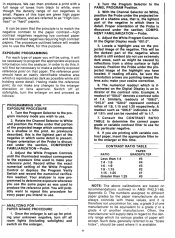samhuwyler
Member
Hello Everyone
I'm currently working on a Portrait series and have to get a lot of printing done. I do test strips and all but still, I use up a lot of paper before I'm happy with a print.
I remember hearing something about using a light meter in the darkroom to determine density of the film and use this information to calculate printing time. I searched the web but couldn't find any explanation how this actually works.
Does anyone know a good website or such to understand this procedure?
Thank you and
Cheers from Switzerland
sam
I'm currently working on a Portrait series and have to get a lot of printing done. I do test strips and all but still, I use up a lot of paper before I'm happy with a print.
I remember hearing something about using a light meter in the darkroom to determine density of the film and use this information to calculate printing time. I searched the web but couldn't find any explanation how this actually works.
Does anyone know a good website or such to understand this procedure?
Thank you and
Cheers from Switzerland
sam
Last edited:












